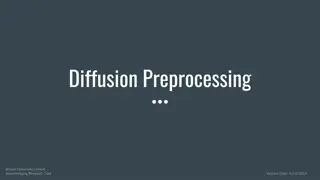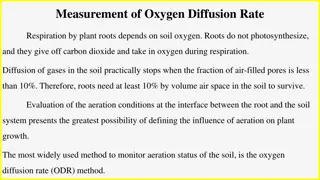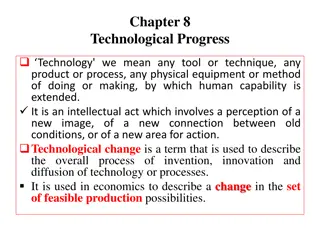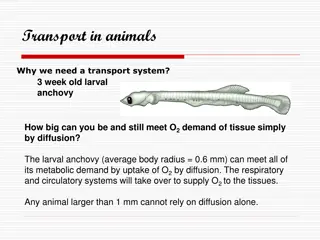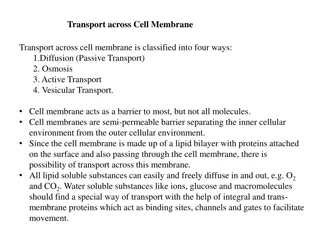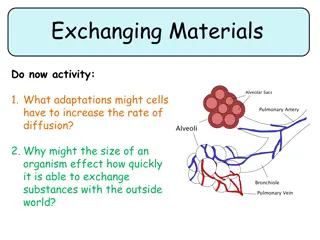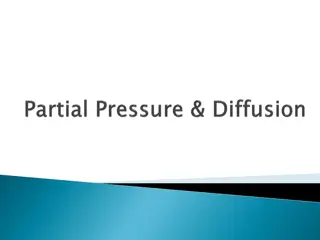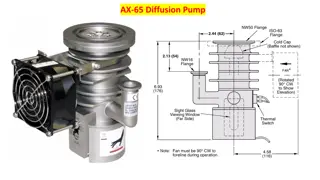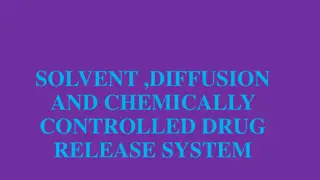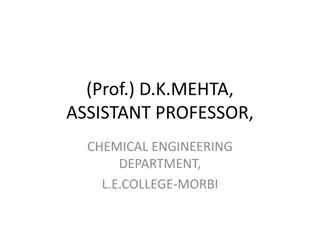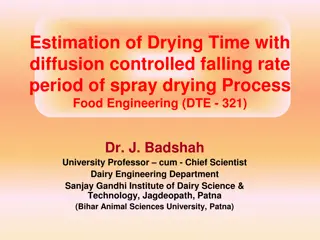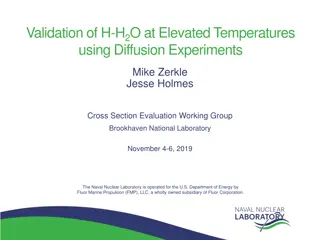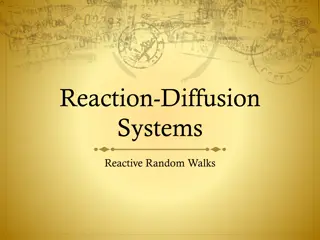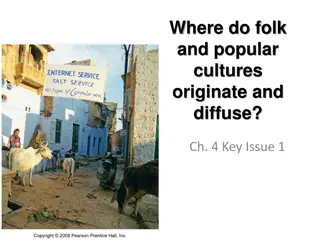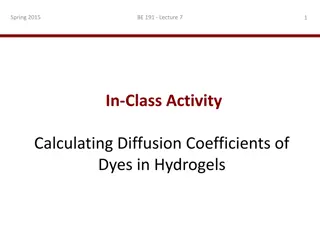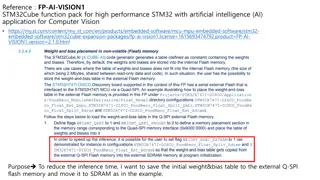
Understanding Heterogeneous Catalytic Reactions
Learn about the essential steps in a heterogeneous catalytic reaction, including diffusion, mass transfer, adsorption, desorption, and surface reactions. Explore the importance of external diffusion effects and mass transfer diffusion in industrial reactions. Guidelines for deducing mechanisms and recognizing rate-limiting steps in surface-limited reaction mechanisms are also discussed.
Download Presentation

Please find below an Image/Link to download the presentation.
The content on the website is provided AS IS for your information and personal use only. It may not be sold, licensed, or shared on other websites without obtaining consent from the author. If you encounter any issues during the download, it is possible that the publisher has removed the file from their server.
You are allowed to download the files provided on this website for personal or commercial use, subject to the condition that they are used lawfully. All files are the property of their respective owners.
The content on the website is provided AS IS for your information and personal use only. It may not be sold, licensed, or shared on other websites without obtaining consent from the author.
E N D
Presentation Transcript
Review: Steps in a Heterogeneous Catalytic Reaction L19-1 7. Diffusion of B from external surface to the bulk fluid (external diffusion) 1. Mass transfer of A to surface 2. Diffusion of A from pore mouth to internal catalytic 6. Diffusion of B from pellet interior to pore mouth 3. Adsorption of A onto catalytic surface surface 5. Desorption of product B from surface 4. Reaction on surface Ch 10 assumes steps 1,2,6 & 7 are fast, so only steps 3, 4, and 5 need to be considered Slides courtesy of Prof M L Kraft, Chemical & Biomolecular Engr Dept, University of Illinois at Urbana-Champaign.
Review: Guidelines for Deducing Mechanisms L19-2 More than 70% of heterogeneous reaction mechanisms are surface reaction limited When you need to propose a rate limiting step, start with a surface reaction limited mechanism unless you are told otherwise If a species appears in the numerator of the rate law, it is probably a reactant If a species appears in the denominator of the rate law, it is probably adsorbed in the surface + i j k kPP K P + i j = Generic equation: r' A 1 KP + + K P i i j j k k Slides courtesy of Prof M L Kraft, Chemical & Biomolecular Engr Dept, University of Illinois at Urbana-Champaign.
L19-3 L19: External Diffusion Effects Up until now we have assumed adsorption, surface reaction, or desorption was rate limiting, which means there are no diffusion limitations In actuality, for many industrial reactions, the overall reaction rate is limited by the rate of mass transfer of products and reactants between the bulk fluid and the catalyst surface External diffusion (today) Internal diffusion (L20, L21 & L21b) Goal: Overall rate law for heterogeneous catalyst with external diffusion limitations. This new overall reaction rate would be inserted into the design equation to get W, XA, CA, etc External diffusion Internal diffusion Slides courtesy of Prof M L Kraft, Chemical & Biomolecular Engr Dept, University of Illinois at Urbana-Champaign.
L19-4 Mass Transfer Diffusion: spontaneous intermingling or mixing of atoms or molecules by random thermal motion External diffusion: diffusion of the reactants or products between bulk fluid and external surface of the catalyst Molar flux (W) Molecules of a given species within a single phase will always diffuse from regions of higher concentrations to regions of lower concentrations This gradient results in a molar flux of the species, (e.g., A), WA (moles/area time), in the direction of the concentration gradient A vector: W W = + W i j + W k A Ax Ay Az Slides courtesy of Prof M L Kraft, Chemical & Biomolecular Engr Dept, University of Illinois at Urbana-Champaign.
L19-5 Molar Flux W & Bulk Motion BA Molar flux consists of two parts Bulk motion of the fluid, BA Molecular diffusion flux relative to the bulk motion of the fluid produced by a concentration gradient, JA WA = BA + JA (total flux = bulk motion + diffusion) Bulk flow term for species A, BA: total flux of all molecules relative to fixed coordinates ( Wi) times the mole fraction of A (yA): = B Or, expressed in terms of concentration of A & the molar average velocity V: y W A A i mol m mol m m = = = C C y B V B i i V A A A A 2 3 s s The total molar flux of A in a binary system composed of A & B is then: C C y y = + + W J W W = = + + In terms of concentration of A W W J J V A A A i i V A A A ( ) In terms of mol fraction A A A A A B Slides courtesy of Prof M L Kraft, Chemical & Biomolecular Engr Dept, University of Illinois at Urbana-Champaign.
L19-6 Diffusional Flux of A, JA & Molar Flux W WA = JA + BA (total flux = diffusion + bulk motion) = = = + + + C C y W W W J J J V A A A W y i i V A A A ( ) + W A A A A B Diffusional flux of A resulting from a concentration difference, JA, is related to the concentration gradient by Fick s first law: mol m s = cD y J A AB A 2 c: total concentration DAB: diffusivity of A in B yA: mole fraction of A = + + i j k gradient in rectangular coordinates x y z Putting it all together: = + cD y y W W General equation A AB A A i i ( ) = + + cD y y W W W molar flux of A in binary system of A & B A AB A A A B Effective diffusivity, DAe: diffusivity of A though multiple species Slides courtesy of Prof M L Kraft, Chemical & Biomolecular Engr Dept, University of Illinois at Urbana-Champaign.
L19-7 Simplifications for Molar Flux WA = JA + BA (total flux = diffusion + bulk motion) = + cD y y W W General equation: A AB A A i i ( ) = + + cD y y W W W A AB A A A B Molar flux of A in binary system of A & B For constant total concentration: cDAByA = DABCA When there is no bulk flow: = W 0 i i y W 0 For dilute concentrations, yA is so small that: A i i For example, consider 1M of a solute diffusing in water, where the concentration of water is 55.6 mol water/dm3 C 1 y C C 1 55.6 + + A = = = y 0.018 0 A A A W Slides courtesy of Prof M L Kraft, Chemical & Biomolecular Engr Dept, University of Illinois at Urbana-Champaign.
L19-8 Evaluation of Molar Flux Type 1: Equimolar counter diffusion (EMCD) For every mole of A that diffuses in a given direction, one mole of B diffuses in the opposite direction Fluxes of A and B are equal in magnitude & flow counter to each other: WA = - WB A AB A cD y or for constant total concentration: A AB A cD y Type 2: Dilute concentration of A: ( ) A AB A A A B cD y y = + + 0 Type 3: Diffusion of A though stagnant B: WB=0 ( A AB A A A cD y y = + + ( ) W W W W W W = + + y A A B 0 bulk motion 0 W W = W W = D C A AB A y W 0 A i i W W W W W W W W or constant C = W W : = cD y total C A AB A D A AB A 1 ) W W = W W W W W W cD y A AB A B 1 y 0 A Type 4: Forced convection drives the flux of A. Diffusion in the direction of flow (JA) is tiny compared to the bulk flow of A in that direction (z): volumetric flow rate W W = W W V V W W C = + 0 diffusion 0 = cD y C C A z V A A A AB A A z A A c cross-sectional area Slides courtesy of Prof M L Kraft, Chemical & Biomolecular Engr Dept, University of Illinois at Urbana-Champaign.
L19-9 Boundary Conditions Boundary layer Hydrodynamics boundary layer thickness: distance from a solid object to where the fluid velocity is 99% of the bulk velocity U0 Mass transfer layer thickness: distance from a solid object to where the concentration of the diffusing species is 99% of the bulk concentration Typically diffusive transport is modelled by treating the fluid layer next to a solid boundary as a stagnant film of thickness CAb CAs CAs: Concentration of A at surface CAb: Concentration of A in bulk In order to solve a design equation that accounts for external diffusion limitations we need to set the boundary conditions Slides courtesy of Prof M L Kraft, Chemical & Biomolecular Engr Dept, University of Illinois at Urbana-Champaign.
L19-10 Types of Boundary Conditions Concentration at the boundary (i.e., catalyst particle surface) is specified: If a specific reactant concentration is maintained or measured at the surface, use the specified concentration When an instantaneous reaction occurs at the boundary, then CAs 0 Flux at the boundary (i.e., catalyst particle surface) is specified: a) No mass transfer at surface (nonreacting surface) W 1. 2. = 0 Asurface b) Reaction that occurs at the surface is at steady state: set the molar flux on the surface equal to the rate of reaction at the surface W r '' = reaction rate per unit surface area (mol/m2 sec) A A surface c) Convective transport across the boundary layer occurs W ( ) = k C C A c Ab As boundary 3. Planes of symmetry: concentration profile is symmetric about a plane Concentration gradient is zero at the plane of symmetry dC dr Radial diffusion in a tube: Radial diffusion in a sphere A = 0 at r=0 r r Slides courtesy of Prof M L Kraft, Chemical & Biomolecular Engr Dept, University of Illinois at Urbana-Champaign.
L19-11 Correlation for Convective Transport Across the Boundary Layer For convective transport across the boundary layer, the boundary condition is: ( ) = W k C C A c Ab As boundary The mass transfer coefficient for a single spherical particle is calculated from the Fr ssling correlation: c k d D AB = Sh p kc: mass transfer coefficient dp: diameter of pellet (m) DAB: diffusivity (m2/s) Sh: Sherwood number (dimensionless) 12 13 = + Sh 2 0.6Re Sc Ud = p Schmidt number: Sc Reynold's number Re= D AB : kinematic viscosity or momentum diffusivity (m2/s); = : fluid density (kg/m3) U: free-stream velocity (m/s) DAB: diffusivity (m2/s) : viscosity (kg/m s) dp: diameter of pellet (m) Slides courtesy of Prof M L Kraft, Chemical & Biomolecular Engr Dept, University of Illinois at Urbana-Champaign.
L19-12 Rapid Rxn on Catalyst Surface Spherical catalyst particle in PBR Liquid velocity past particle U = 0.1 m/s Catalyst diameter dp= 1 cm = 0.01 m Instantaneous rxn at catalyst surface CAs 0 Bulk concentration CAb= 1 mol/L kinematic viscosity = 0.5 x 10-6 m2/s DAB = 1x10-10 m2/s The velocity is non-zero, so we primarily have convective mass transfer to the catalyst particle: A boundary Compute kC from Fr ssling correlation: ( ) 6 2 0.5 10 m s ( ) ( 200 Sh 2 .6 0 0 + = 1 0 2 1 10 m 0.01 m CAb= 1 mol/L 0.01m CAs=0 Determine the flux of A to the catalyst particle ( ) = W k cC C Ab As D Re=Ud AB d p = k S h = Sc 1 2 13 = + Sh 2 0.6 Re Sc c D p AB 6 2 0.1m s 0.01m 0.5 10 1 10 ) 00 m m s = Sc 5000 = = Sc = Re Re 2000 10 2 s 1 2 13 = Sh 461 50 m s s 6 = k 4.61 10 = k 461 c c Slides courtesy of Prof M L Kraft, Chemical & Biomolecular Engr Dept, University of Illinois at Urbana-Champaign.
L19-13 Rapid Rxn on Catalyst Surface Spherical catalyst particle in PBR Liquid velocity past particle U = 0.1 m/s Catalyst diameter dp= 1cm = 0.01m Instantaneous rxn at catalyst surface CAs 0 Bulk concentration CAb= 1 mol/L kinematic viscosity = 0.5 x 10-6 m2/s DAB = 1x10-10 m2/s The velocity is non-zero, so we primarily have convective mass transfer to the catalyst particle: Aboundary Computed kC from Fr ssling correlation: CAb= 1 mol/L 0.01m CAs=0 Determine the flux of A to the catalyst particle ( ) = W k C C c D A b A s m s 6 AB d = k Sh = k 4.61 10 c c p mol m m s mo 1000L l 1 L 3 0 6 = = W 4.61 10 W 4.61 1 0 Aboundary Abound ary 2 3 s m Because the reactant is consumed as soon as it reaches the surface mol m 3 = = W As r '' 4.61 10 A boundary 2 s Slides courtesy of Prof M L Kraft, Chemical & Biomolecular Engr Dept, University of Illinois at Urbana-Champaign.
L19-14 For the previous example, derive an equation for the flux if the reaction were not instantaneous, and was instead at steady state (WA|surface =-rA ) and followed the kinetics: -rAS =krCAs (Observed rate is not diffusion limited) ( ) c Ab As Aboundary = k C C W As r = '' k C r As Because the reaction at the surface is at the steady state & not instantaneous: C 0 = = W As r '' rk C A As boundary As So if CAs were in terms of measurable species, we would know WA,boundary Use the equality to put CAs in terms of measurable species (solve for CAs) ( ) = + = = k C k rC k C k C k cC k C k C C k C c A b A s c As c A b A s r As c Ab As r A s k C k c Ab k ( ) = C Plug into -r As = + k C C k k As c Ab A s r c + r c k k C k Diffusion limited r c + Ab k r'' = = W r'' = = W r'' k C A As A As r A k k C k k k C k s boundary bounda y r r c r c k k C Rapid rxn, kr>>kc kc in denominator is negligible = k C r c Ab k Ab = = r'' r'' As c Ab As As + k r c r r c k k C Slow rxn, kr<<kc kr in denominator is negligible Reaction limited = r'' k C r c Ab k Ab = = r'' r'' As r Ab As As + k r c c Slides courtesy of Prof M L Kraft, Chemical & Biomolecular Engr Dept, University of Illinois at Urbana-Champaign.
L19-15 Mass Transfer & Rxn Limited Reactions r c k k C k Ab k reaction limited regime r'' = = r'' As + k C r c As r Ab transport limited regime r'' k C = -rA As c Ab D Ud AB d = p k Sh = Sc 12 13 Re= = + Sh 2 0.6Re Sc c D p AB 1 2 13 Ud D p AB d = + k 2 0.6 c D p AB (U/dp)1/2 (fluid velocity/particle diameter)1/2 When measuring rates in the lab, use high velocities or small particles to ensure the reaction is not mass transfer limited Slides courtesy of Prof M L Kraft, Chemical & Biomolecular Engr Dept, University of Illinois at Urbana-Champaign.
L19-16 Mass Transfer & Rxn Limited Reactions r c k k C k Ab k reaction limited regime r'' = = r'' As + k C r c As r Ab transport limited regime r'' k C = -rA As c Ab D Ud AB d = p k Sh = Sc 12 13 Re= = + Sh 2 0.6Re Sc c D p AB 1 2 13 Ud D p AB d = + k 2 0.6 c D p AB (U/dp)1/2 = (fluid velocity/particle diameter)1/2 k k Proportionality is useful for assessing parameter sensitivity 1 2 1 2 2 3 1 6 2 3 1 2 d d D U U D U p1 AB 1 6 c2 2 AB2 D 1 = k c 1 2 p d c1 1 AB1 2 p2 Slides courtesy of Prof M L Kraft, Chemical & Biomolecular Engr Dept, University of Illinois at Urbana-Champaign.
L19-17 Mass Transfer Limited Rxn in PBR b a c a d a + + A B C D A steady state mole balance on reactant A between z and z + z : ( ) 6 1 + = = Az z F Az z F r'' a (A z) 0 where a + z A c c c d p ac: external surface area of catalyst per volume of catalytic bed (m2/m3) : porosity of bed, void fraction r A: rate of generation of A per unit catalytic surface area (mol/s m2) Divide out Ac z: c A z Put Faz and rA in terms of CA: Axial diffusion is negligible compared to bulk flow (convection) F B A UC A = = z z Substitute into the mass balance ( ) A A c r'' a 0 dz dz dp: particle diameter (m) dF dz 1 Az z F Az z F Take limit as z 0: W = z Az + = + r'' a 0 z + = r'' a 0 A c A c A = c + F A (J B )A A A c A A c z z z A A c A c dC dz dC dU dz d UC 0 A A + = + + = U r'' a 0 U C r'' a 0 + = A c A A c Slides courtesy of Prof M L Kraft, Chemical & Biomolecular Engr Dept, University of Illinois at Urbana-Champaign.
L19-18 Mass Transfer Limited Rxn in PBR b a c a d a dC dz A + + + = A B C D U r'' a 0 A c At steady-state: Molar flux of A to particle surface = rate of disappearance of A on the surface r'' W = = mass transfer coefficient kc =DAB/ (s-1) boundary layer thickness CAs: concentration of A at surface ( ) c c A As U k a C C 0 dz dC U k a C 0 dz varies with distance down reactor dC U k a C dz A C A0 k a C exp z C U ( ) k C C Substitute A Ar c A As CA: concentration of A in bulk dC A CAs 0 in most mass transfer-limited rxns = Rearrange & integrate to find how CA and the r A A = c c A C c c k a U C C z c c k a U dC C A A = A A ln z = = dz c c A A0 0 c c k a U c c k a U c c A = = = C C exp z r'' k C exp z A A0 A c A0 A0 Slides courtesy of Prof M L Kraft, Chemical & Biomolecular Engr Dept, University of Illinois at Urbana-Champaign.

